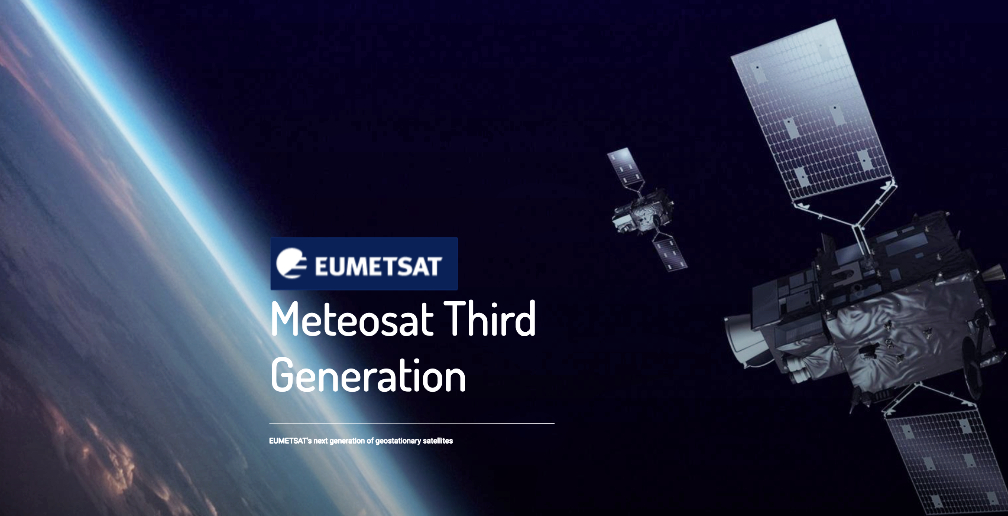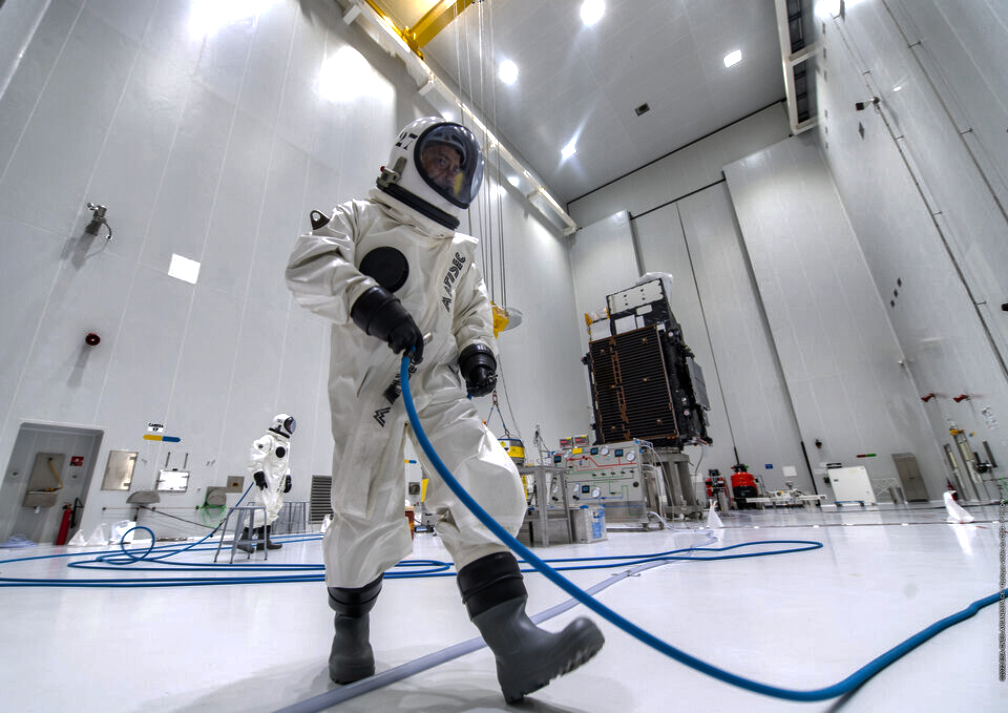
With liftoff now scheduled for December 13th., Europe’s first Meteosat Third Generation Imager (MTG-I1) satellite has been fueled — once in geostationary orbit, this new weather satellite will provide state-of-the art observations of Earth’s atmosphere and real-time monitoring of lightning events, taking weather forecasting to the next level.
MTG-I1 has been at Europe’s Spaceport in French Guiana since mid-October being readied for liftoff. Over these last weeks, the satellite’s functionality has been checked out for the last time and all the ‘deployables’, namely the solar array, the Ka-band antenna and the Data Collection Service and Geostationary Search and Rescue instrument antennas, are ready for the launch.

Having confirmed the satellite is ‘good to go’, the next step was to load the two tons of highly volatile fuel into the satellite’s central tanks that will power the craft to its final geostationary orbit and allow for 15 years of operational orbit maintenance. This is an extremely delicate and potentially dangerous phase, with the highly toxic hydrazine and oxidizer being transferred from transport drums into the satellite. To accomplish this action, MTG-I1 was moved to the S5B Hazardous Processing Facility, which has all the necessary detection and decontamination systems needed during this delicate process.

As can be seen from the photographs, the fuelling team is suitably attired in their ‘scape suits’ so that they are completely protected should any unexpected leak occur.

The next step for the fueled satellite, which now weighs almost 3.8 tons, is to mount it onto the launch adapter. This is the first part of the ‘combined operations’ phase with Arianespace where the satellite is assembled carefully into the upper composite of the Ariane 5 rocket. This step also involves the co-passengers, the Galaxy 35 and 36 telecommunication satellites, which occupy the upper position in the launcher fairing.
On December 13th., MTG-I1 is scheduled to launch. This date has actually been advanced by one day, owing to a delay in the preceding Vega-C launch, which will now occur after MTG-I1.

MTG-I1 is the first of six satellites that will form the full MTG system, which will provide critical data for weather forecasting over the next 20 years. In full operations, the mission will comprise two MTG-I satellites and one MTG Sounding (MTG-S) satellites working in tandem. The MTG-I satellites carry two completely new instruments, a Flexible Combined Imager and Europe’s first Lightning Imager, to deliver high-quality data for better weather forecasting.
The Flexible Combined Imager has more spectral channels and is capable of imaging in higher resolution compared to current Meteosat Second Generation’s Spinning Enhanced Visible and Infrared instrument.
The Lightning Imager offers a completely new capability for European meteorological satellites and will continuously monitor more than 80% of the Earth for lightning discharges, taking place either between clouds or between clouds and the ground.
The MTG-I satellites also carry two smaller payloads for data collection from remote science beacons and for search and rescue by detecting emergency beacons.
These all-new instruments will allow severe storms to be detected in their early stages and will therefore be key for issuing timely warnings.
The MTG mission is a cooperation between Eumetsat and ESA. ESA is responsible developing and procuring the six MTG satellites. Eumetsat defines the system requirements, develops the ground systems, procures the launch services, operates the satellites, and makes the data available to users.
ESA’s launch campaign manager, James Champion, said, “Everything went smoothly, and all the teams here are very happy that we’ve passed this significant milestone in the launch campaign. Well done to the fuelling team from Thales Alenia Space in France who carried out this delicate operation without a hitch.”

